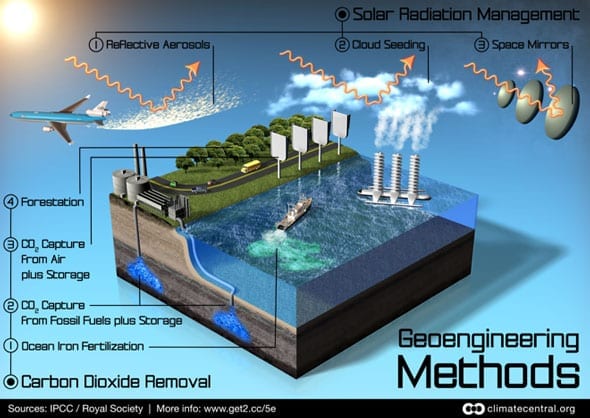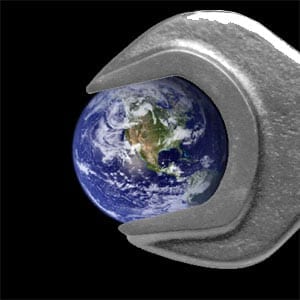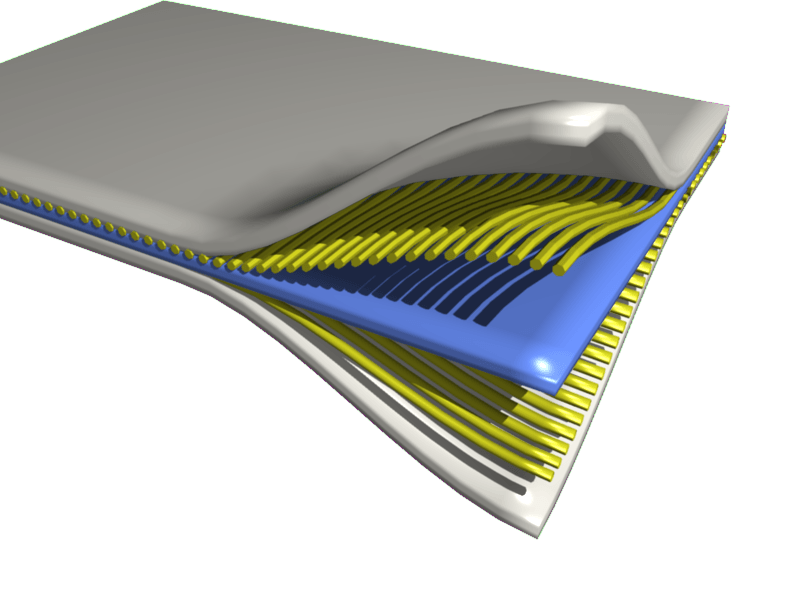
Scientific studies of techniques for deliberately modifying the climate are getting ready to move out of the laboratory
IN 1990 John Latham, a cloud physicist, published a short article in Nature under the headline “Control of Global Warming?” It argued that if low-lying maritime clouds were made a bit brighter, the Earth could be cooled enough to make up for the increased warming caused by emissions of greenhouse gases. The brightening was to be achieved by wafting tiny sea-salt particles up into the clouds from below; by acting as “cloud condensation nuclei” (CCN) they would increase the number of water droplets in the clouds, and thus the amount of sunlight they reflect out into space. Latham calculated that a square kilometre of cloud might be kept bright with just 400 grams of spray an hour. And finding out if it was really that easy might be straightforwardly tested. “It seems feasible”, Dr Latham wrote, “to conduct an experiment in which CCN are introduced in a controlled manner into marine stratus.”
A quarter of a century on, such a test may soon be on the cards. For more than ten years Dr Latham’s idea was almost entirely ignored. Then it caught the attention of an enterprising engineer, Stephen Salter of the University of Edinburgh, who looked at ways it might be made practicable, and a small number of researchers started to pay attention. But the question of whether anyone could actually produce ship-borne sprayers that would reliably churn out particles a ten-thousandth of a millimetre in diameter at a rate of 1,000 trillion a second remained open.
Armand Neukermans, a retired Silicon Valley engineer whose achievements include, among other things, the development of the earliest inkjet printers, has with various colleagues (also mostly retired) looked at a range of possible techniques. One that may be up to the job is “effervescent spray atomisation” in which, rather than trying to make truly tiny droplets straight away, you make larger ones in which water mixed with gas subsequently fizzes into particles of the desired size.
Dr Neukermans, Thomas Ackerman and Robert Wood, the latter two both scientists who study clouds at the University of Washington, have with colleagues put together a proposal for field tests to see if such sprayers really work, if their effects can be controlled and measured, and what happens to clouds treated in this way. They are now investigating how to get such a programme financed.
The Latest on: Geoengineering experiments
[google_news title=”” keyword=”Geoengineering experiments” num_posts=”10″ blurb_length=”0″ show_thumb=”left”]
via Google News
The Latest on: Geoengineering experiments
- BEHIND THE HEADLINES - Dimming the sun to cool the earth: Is solar geoengineering the future?on May 8, 2024 at 6:52 am
There are lots of reasons to be skeptical about geoengineering technology. Nonetheless, many scientists agree that research into the subject remains necessary.
- The world can’t afford to politicize climate change researchon May 6, 2024 at 12:00 am
The idea that there is only one correct policy — cutting carbon emissions to zero in a short time frame — is absurd, and especially so when this sole policy is failing globally.
- State lawmakers pass bill surrounding experimental process in sky: 'This is not a fringe movement'on May 2, 2024 at 4:15 am
While it may seem harmless, the language of this legislation may prevent legitimate future scientific experiments that could help our planet. State lawmakers pass bill surrounding experimental process ...
- Cloud control: Humanity’s never-ending quest to control the weatheron April 29, 2024 at 6:53 am
Are today’s geoengineering proposals any better? By Bill Gourgey | Published Apr 29, 2024 9:53 AM EDT An October 1919 Popular Science story described hail cannons and similar technological ...
- Scientist Slams Politicians For Banning Geoengineering Experimentson April 27, 2024 at 3:30 am
A scientist is warning against regulatory attempts to ban geoengineering, which seeks to alter the climate as global warming threatens to make the planet less habitable for us humans. "The growing ...
- Scientist Slams Politicians For Banning Geoengineering Experimentson April 27, 2024 at 3:01 am
A climate scientist is warning against regulatory attempts to quell weather-changing technology, which seeks to cool the planet through various means as climate change keeps heating it up. In an ...
- Controversial methods to cool the Earth by reflecting sunlight gain traction as global temperatures riseon April 26, 2024 at 2:20 pm
Relatively untouched ideas are gaining momentum as potential short-term solutions to lower Earth's temperature.
- MIT Technology Reviewon April 22, 2024 at 4:59 pm
Mexican officials have also proposed restrictions on experiments within their boundaries. To be clear, I’m not a disinterested observer but a climate researcher focused on solar geoengineering ...
via Bing News










